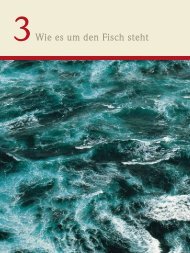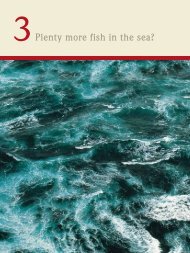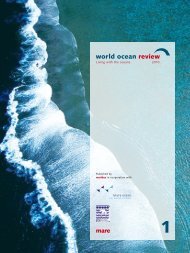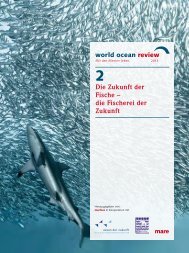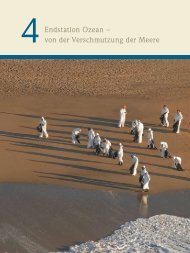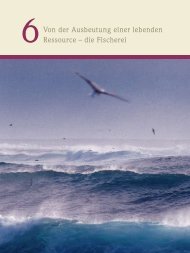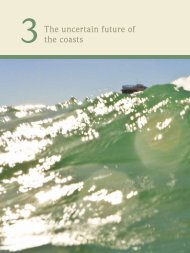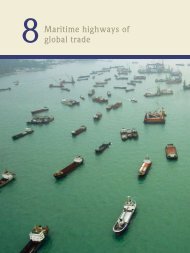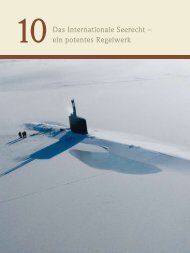Download WOR 2 PDF - World Ocean Review
Download WOR 2 PDF - World Ocean Review
Download WOR 2 PDF - World Ocean Review
Create successful ePaper yourself
Turn your PDF publications into a flip-book with our unique Google optimized e-Paper software.
Plenty more fish in the sea? Venerable gentlemen of fisheries science: ICES researchers held their statutory meeting at the House of Lords in London in1929. Upon its foundation in 1902, the ICES had 8 member nations: today it has 20.likely to develop in future years. How many researchexpeditions are undertaken differs from country to country.Researchers sample individual fish stocks up to fivetimes a year. Information on the eggs and larvae of somestocks is also recorded. These numbers indicate the parentstock and the numbers of young to be anticipated.The researchers utilize both the fishery-dependentand the fishery-independent data to adjust and augmentthe fisheries’ official catch numbers. For instance, fromtheir own sample catches they can estimate the approximatevolume of bycatch in the fishing grounds. In manycases catches from illegal fishing are also shown up. Forinstance, double logbooks are frequently used – one forthe authorities showing the official figures, and anotherfor the scientists showing the higher but genuine catchnumbers. Comparing these two allows a more accurateestimation of how many fish were actually caught in amaritime region.How does the data reach the FAO?The catch data from both the fishermen and the scientistsis initially forwarded to higher scientific institutionswhich utilize it to estimate the current stocks of the variousfish species and maritime regions. One objective is togenerate a supra-regional overview from the national data.For example, the International Council for the Explorationof the Sea (ICES) in Copenhagen is responsible for theNortheast Atlantic. Its working groups use both the fisheries’official catch data and the scientific results to calculatethe current stocks of the different species of fish and fauna.The ICES then sends these stock estimates to the FAO.Data about stocks in other maritime regions reachesthe FAO in a similar way. For example, the NorthwestAtlantic Fisheries Organization (NAFO) is responsible forthe Northwest Atlantic. It collates data from Canada, theUSA, France (for the Atlantic islands of St. Pierre andMiquelon) and the foreign fleets from Russia and the EUwhich operate in this region. The NAFO then forwardsthe data to the FAO. The Canadian and US national fisheriesinstitutes also report directly to the FAO.The FAO does not re-evaluate this information, butmerely summarizes, edits and ultimately publishes thedata for the various maritime regions of the world.Disagreement on the condition of fish stocksAround 1500 fish stocks around the world are commerciallyfished, with the various stocks being exploited todifferent extents. Comprehensive estimations of abundancecurrently exist for only around 500 of these stocks.In most cases these are the stocks which have been commerciallyfished for many decades. For many years, exactrecords have been kept of what and how much is caught:ICESThe InternationalCouncil for the Explorationof the Sea(ICES) was founded inCopenhagen, Denmark,in 1902 and isthe world’s oldestintergovernmentalorganization. At thattime there was agrowing awareness insome European fishingnations that the longtermmanagement ofmigratory fish stocksdepended on a coordinatedapproach. Todaythe ICES acts onbehalf of the EU andother fishing nationssuch as Canada, Icelandand Russia. It isresponsible for all theliving marine resourcesin the NortheastAtlantic, a total of120 species. The ICESrecommends the maximumfish catcheswithin a specific maritimeregion.



